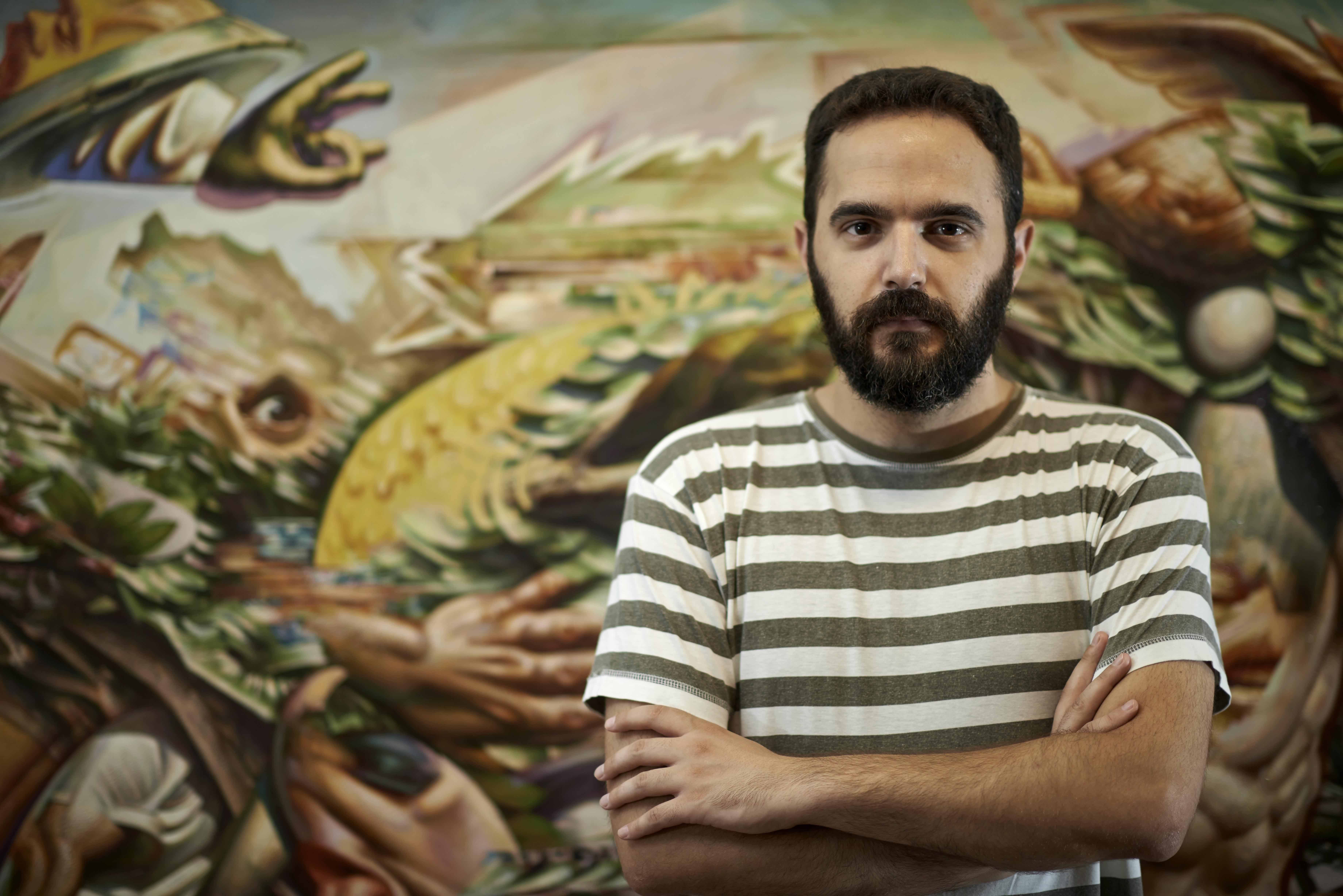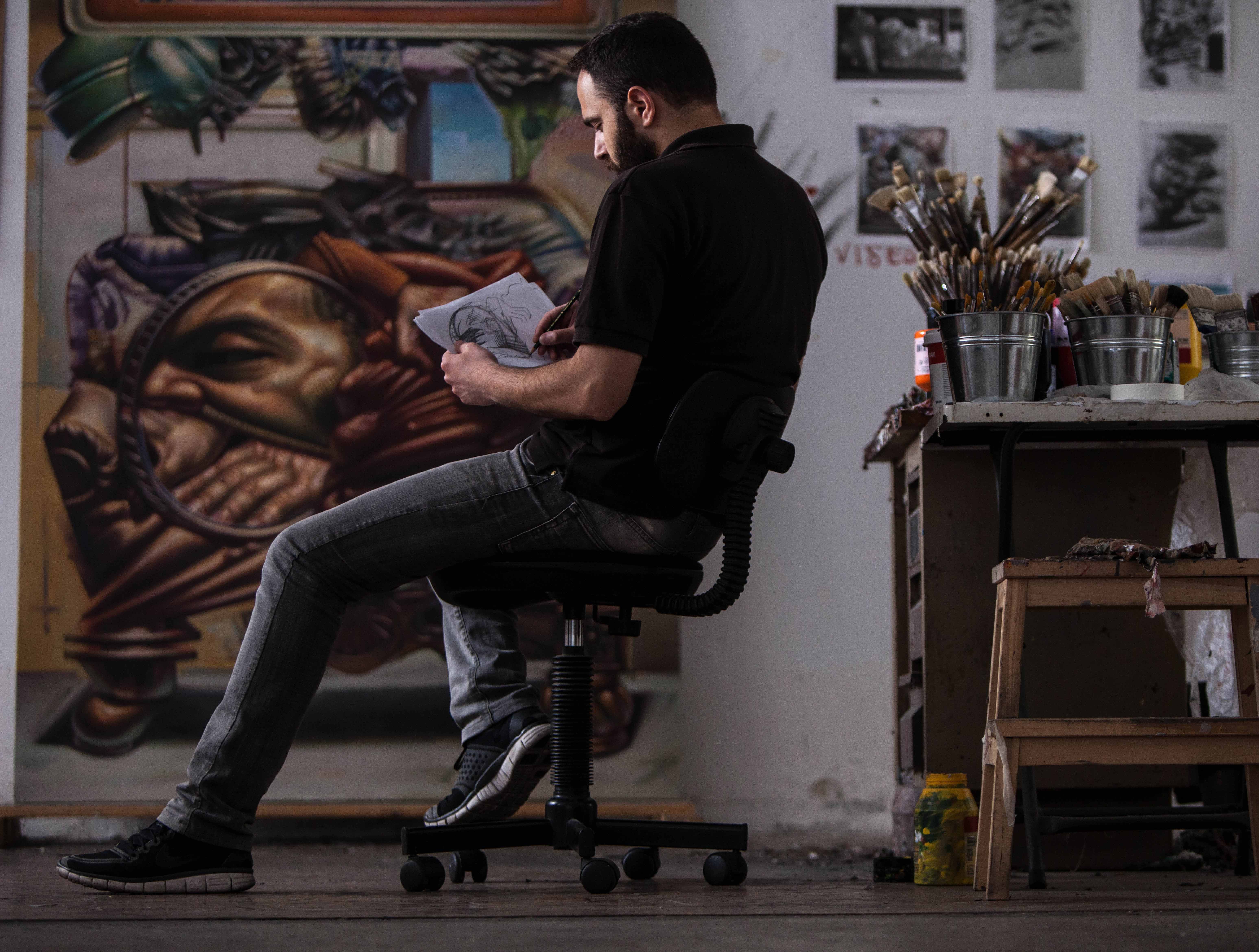By Euphrosyne Doxiadis
"Inevitable Nature" series is being presented at SWAB Barcelona on the 29th of September.
On the 29th of September, the exhibition of eight works of the painter Nikos Moschos opens in Barcelona. I feel great admiration for his paintings.
I first came across his work, a few years ago, at Xippas gallery in Patriarchou Ioakim Street, in Athens. The walls of the gallery were filled by his big scale works. The human figure, either in a complete state or deconstructed, was the main theme of the canvases. The moment I stepped into the gallery I was astounded. His paintings had been executed so perfectly that caught the viewer’s eye instantly. ‘’What a great painter!" I said to myself . I got the impression that the painter works with oil colours -I hadn’t realised that the works were not painted with oil since I hadn’t checked the catalogue. I asked the lady who worked there if It was possible to meet the artist himself. She told me that she could get him on the phone. She handed me the receiver. Photo by Christos Simatos
Photo by Christos Simatos
"Nikos, I'm Euphrosyne Doxiadis, your works are staggering. I’m mad about them." "Thank you very much, "he said. I was impressed by his sweet voice and his kindness. "How is it possible to work with oil paint with such mastery?" I asked. "It’s not oil colour," he said, "It’s acrylic." I could not believe it. I hadn’t seen such ambitious -in a good way, monumental painting in years. A feast for the eyes! There was something in the composition and the general feeling of these works that enchanted me. We talked about meeting in person some time but after that, several years passed until we finally met.
I found him again through Facebook. Whenever I saw a new work by him, I was impressed by its power. A picture of life which was strong, structured, mutated in exquisite painting. Disparate elements, mostly tragic rather than cheerful, all mixed up had become a feast for the eyes! I wondered how tragic motifs like these could possibly be turned into music for the eyes. How was it possible to feel pleasure by seeing a work full of pain? And then it dawned on me: When something is so well-made by a great master, the theme takes second place without losing any of its intensity. Colours that go along with the vision of the painter have the ability to cover any negative emotion.
Hieronymus Bosch is a great example of this paradox. Even though he paints Hell, the viewer can’t stop observing it. Devils and thistles captivate the eye and comfort the soul. Fear and horror are transformed into something else. This is the magic of painting. When our nightmares appear on the canvas, they lose their power over us and are no longer threatening. They become caricatures of themselves. All this negative energy of the demons is weakened, just like when psychoanalysis retrieves from the depths of memory the traumatic events that we have experienced. By bringing them to light, we can reevaluate their negativity. They usually shrink and disappear. Monsters lose their venom and become a source of enjoyment, a balm for the soul of the beholder. Being objectified by the painter, they give the viewer the ability to experience them from a distance, instead of inside him. They soothe rather than terrorize.
Moschos has baptized this body of works, that will be exhibited in Barcelona, “Inevitable Nature”. What does he mean by this title? I think he wants to show the tragic destruction of nature by humans. His compositions look like a cluster but are still well structured; he mixes seas and forests with rocks and parts of concrete jungle.
Nightmarish corners hide behind industrial pipes, rooms of vulgar love and plots of archaeological excavations. Huge totems that imply the domination of technology over the natural environment. A rough,living, you could say, rock comes out of a window suggesting the low quality of life that we live in the city.
Although the overall picture creates a sense of panic in front of the disasters depicted, if someone takes a better look, he will discover that elements of consecutive destruction alternate with pieces of nature that may not be completely corrupted.
Moschos’ colours shine like precious stones, the sea has the colour of sapphire, skies have azure, pink sunsets and areas of tropical forests give us a bitter sense of what we lose. When I close my eyes after I have seen Moschos’ images, Eliot's’ Waste Land comes to mind. His paintings are social comments expressed with a sense of lyricism. The feeling someone gets in a concrete jungle, is formulated by his hands. His work makes deliberate references to modern technology, photoshop, video games and comics. Shapely, with impressive craftsmanship, it exorcises evil with the painter’s optimism.
photo by Nikolaos G. Moschos
Moschos was born and raised in Heraklion, Crete, a place were a lot of great painters were born, and above all, the beloved El Greco. El Greco ‘’the Cretan’’, who loved painting and created images enigmatic, mysterious and inspiring just as, I dare say, his young compatriot does. It’s giving me a thrill when I think that Moschos’ show in Spain, is not far from Toledo, where El Greco lived and painted his works.
After all, someone has to admit that painting is a Greek art. As Tsarouchis said : "The Greeks love painting so much, that they mix it with death.
The solo exhibition of Nikos Moschos “Inevitable Nature” in Barcelona SWAB Art Fair with ENA Contemporary Art will run from September 29 to October 2.
Swab Art Fair
C. Prats de Mollo, 7, 08021 Barcelona
PAVELLON ITALIANO (Z.6). FERIA BARCELONA